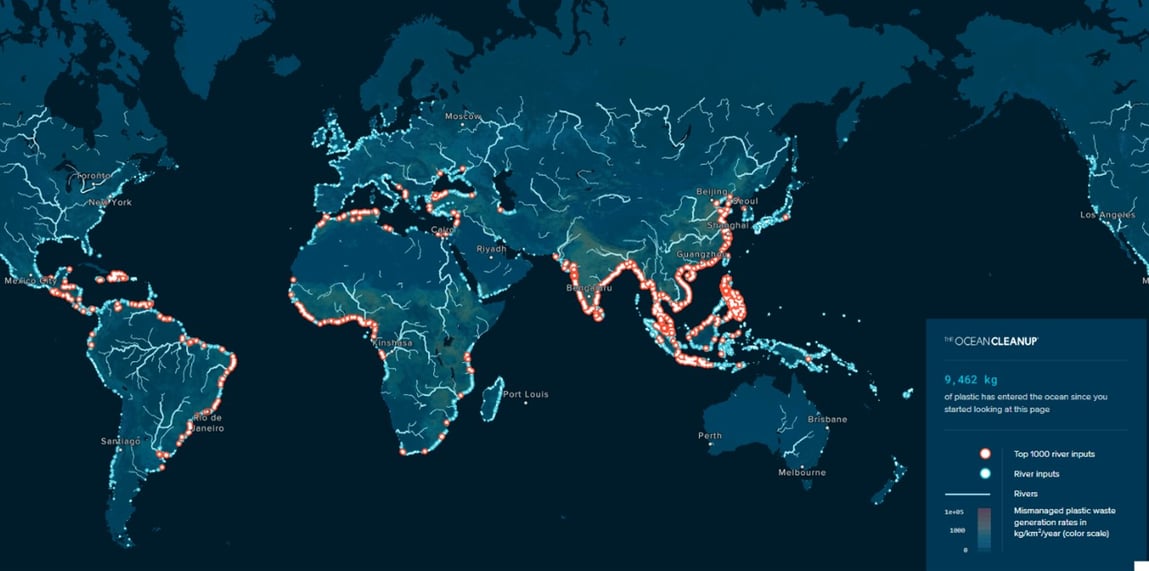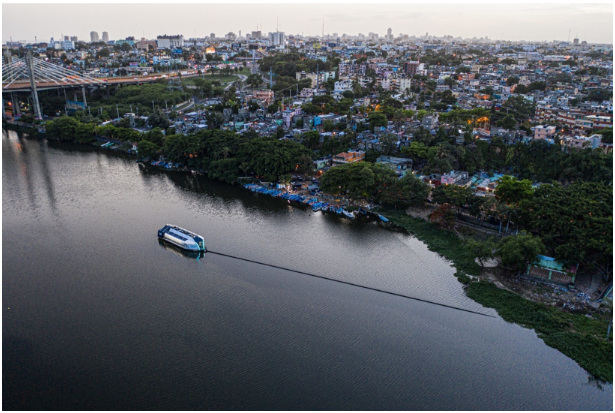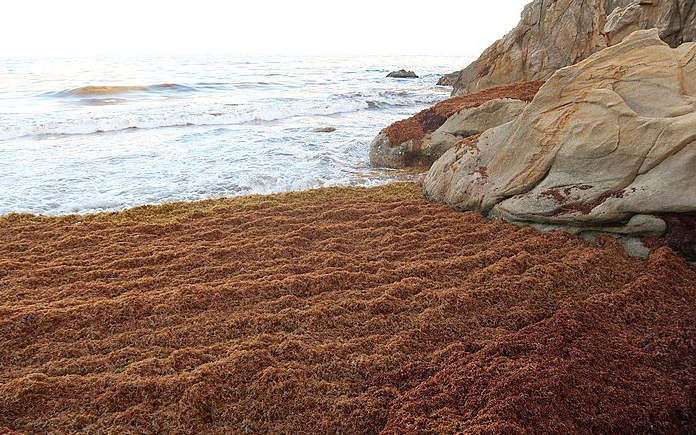8 June 2023 marks the 21st World Ocean Day, which, in the words of The Ocean Project, has a mission to “unite the world to protect and restore our shared ocean and create a stable climate”.
The threats posed to our oceans from human activities are manifold, and in this blog we plunge into two issues arising from the materials and chemicals that we are continuing to allow to drift out to sea every day.
Swimming in a sea of plastic
One of the major flashpoints in ocean conservation over recent years has been the quantity of anthropogenic debris that is ending up in our waters, in particular macroplastics and microplastics. Thanks to their buoyancy, these plastics are capable of travelling vast distances from their source once they enter our waterways, many accumulating in great ‘Garbage Patches’ out at sea – collections of marine debris brought together by ocean gyres.
The presence of plastic in the habitats that World Ocean Day is pushing for the protection of can have a plethora of adverse impacts. As our previous blog on Microplastics dives into detail on, microplastics are ingestible by a range of marine organisms, disrupting their feeding and reproduction. Macroplastics, being greater than 0.5 mm in size, present some similar challenges for larger marine organisms, who will ingest particles of this size in addition to microplastics. Plastic debris at the larger end of the size scale can also cause issues such as entanglement with marine mammals and fish, typically leading to injury and starvation.
Garbage Patches Be Gone
The Great Pacific Garbage Patch, the world’s largest, is estimated to contain 1.8 trillion pieces of plastic. If you are struggling with getting a sense of the scale of that number, then try this for size: these 1.8 trillion pieces of plastic are covering an area three times the size of France.
Addressing this problem might seem like a gargantuan task; however, this has not stopped The Ocean Cleanup from giving it a go and setting an unashamedly bold target: reducing floating plastic by 90% by 2040.
This Dutch non-profit is primarily funded by philanthropy and, through their academic partnerships with a range of universities and research institutions, has developed a two-fold approach.
Firstly, they are facing these garbage patches head on, with their ‘ocean cleanup systems’ acting to target, concentrate and capture debris already in the oceans. The systems are seemingly simple: a large floating ‘U’-shaped barrier is tugged along behind two boats positioned at the end of either arm, funnelling debris towards a retention zone – a mesh net positioned at the base of the ‘U’-shape. Once the retention zone is full, it is hauled onboard a shipping vessel and the catch emptied out for transport back to shore.
However, given they are seeking to remove all of this plastic because of its impact on marine life, they are understandably concerned about making sure that their cleanup activities do not do any further damage. This introduces further complexities into the design and operation of their system. Measures include drone monitoring, underwater acoustic deterrents for marine mammals able to detect high-frequency sound waves, and escape aids and increased buoyancy of the system in certain areas to ensure air-breathing animals can continue to breathe if caught up in the system and ultimately escape.

Credit: The Ocean Cleanup
Secondly, The Ocean Cleanup have recognised that, in order for their activities out at sea to have as great an impact as possible, they need to address one of the major sources of this ocean plastic: our rivers. Around 80% of the plastic entering the oceans via riverways does so through fewer than 1% of the rivers across the globe. Targeting these rivers makes sense.
Helping them to do this are their autonomous ‘Interceptor’ catamarans, which have been patented in the Netherlands - you can find out more about enforcing patents for technology on ships in one of our other blogs.
These catamarans feature large mesh conveyor belts between their hulls for filtering out the plastic debris from the water flowing through them much like a filter feeder and lifting this waste up above the waterline and into onboard containers. In order to maximise the plastic captured, each Interceptor vessel is moored to the riverbank by a barrier designed to filter out and feed plastic from a range of cross-stream positions into the mouth of the Interceptor. Not only are these vessels autonomous, allowing them to work 24/7 to continue extracting plastic, but they are also completely solar-powered, meaning their operation isn’t also exacerbating the issue of marine-related emissions.
The Ocean Cleanup’s dashboard allows you to monitor their deployments in real time, with their interceptors already stationed across the Caribbean, Guatemala, Vietnam, Malaysia and Indonesia, and their systems having captured a grand total of over 2.6 million kilograms of rubbish since 2018!

Credit: The Ocean Cleanup
Seaweed Sinking
Unfortunately, plastics are not our only problem when it comes to ocean pollution.
Much like with plastic debris, the ocean currents also concentrate seaweed. The earliest record of such a seaweed patch in the North Atlantic is the Sargasso Sea – a mass of Sargassum seaweed that forms the world’s largest macroalgae bloom – which was first recorded by Columbus in 1492.
An offshoot of the Sargasso Sea, the Great Atlantic Sargassum Belt, formed in the Central Atlantic in 2011 and has been propagating rapidly to extend all the way across the Atlantic from west Africa to the Caribbean. There are suggestions that this growth is being fuelled by large nutrient flows into this region of the Atlantic from land runoff, in particular arising from deforestation and agriculture growth along the banks of the Amazon, Congo and Orinoco rivers.
Whilst the Sargasso Sea is thought to support a diverse range of marine life, the Great Atlantic Sargassum Belt has been causing problems. The issues that have received greatest coverage are predominantly socio-economic – Sargassum mats are washing up on shorelines in astounding quantities, disrupting coastal commercial activities such as fishing, impacting tourism and decomposing to produce hydrogen sulphide.

Credit: Bricklighting
However, unsurprisingly, there are also ecological issues arising from these massive mats meeting the shoreline. Sargassum influxes have been associated with very low dissolved oxygen concentrations, localised warming and shading, all of which impact the life lying below.
Glasgow-based start-up Seaweed Generation is looking to turn the tide on the issues being caused by Sargassum and provide a means of atmospheric carbon dioxide removal (CDR) alongside. Their pilot studies are taking place off the coast of Antigua and Barbuda and their approach is a surprising one: sinking the seaweed into the deep ocean. They are doing this with the assistance of their ‘AlgaRay’ robot, which you can think of as a WALL-E of the sea.
By the AlgaRay collecting sargassum at the surface before it reaches coastal waters and subsequently diving down with this load to a depth of around 135 meters below the waterline, the sargassum can be taken down below its neutral buoyancy level. Once released at these depths, the sargassum will sink to the sea bed rather than rising back up to the surface.
In order to ensure that the carbon stored in the sargassum biomass is not re-released into the upper ocean by the decomposition of the seaweed, Seaweed Generation are focussed on sinking the sargassum in areas where it will eventually descend to depths of over 2000 meters. By doing so, it is hoped that the carbon will move from living ecosystems, where it can re-enter the ocean as dissolved carbon dioxide in a short timeframe, into geological systems, where the carbon will reside for hundreds to thousands of years.
This approach to addressing the issues being caused by the Great Atlantic Sargassum Belt is not only attractive from the perspective of being simple, but also provides a potentially highly energy-efficient manner to conduct CDR. They are looking to fund their activities through the sale of the resulting carbon removal credits, which are currently on sale at $400/tonne. Unlike several of the CDR technologies we have covered previously, Seaweed Generation’s process involves no phase changes or energy-intensive regeneration steps and, similarly to The Ocean Cleanup’s Interceptor catamarans, their AlgaRay robots will be completely solar powered.
Faster and Further
There seems little doubt that the technologies being developed by the likes of The Ocean Cleanup and Seaweed Generation have the potential to address some of the effects of ocean pollution. However, challenges will come in scaling up to these technologies to have a significant impact in a reasonable timescale. With both these outfits’ systems still undergoing research and development, no doubt questions will also continue to be raised about their side-effects on the marine organisms they are seeking to protect.
Rob is a patent attorney in our engineering and ICT team. Rob has an MEng degree in Chemical Engineering from the University of Cambridge. His masters research project focussed on three-dimensional analysis of particle-size segregation within granular avalanches using magnetic resonance imaging. During his undergraduate studies, Rob spent time working for Proctor & Gamble within their Baby-Care R&D Group.
Email: rob.walker@mewburn.com


-1.png)